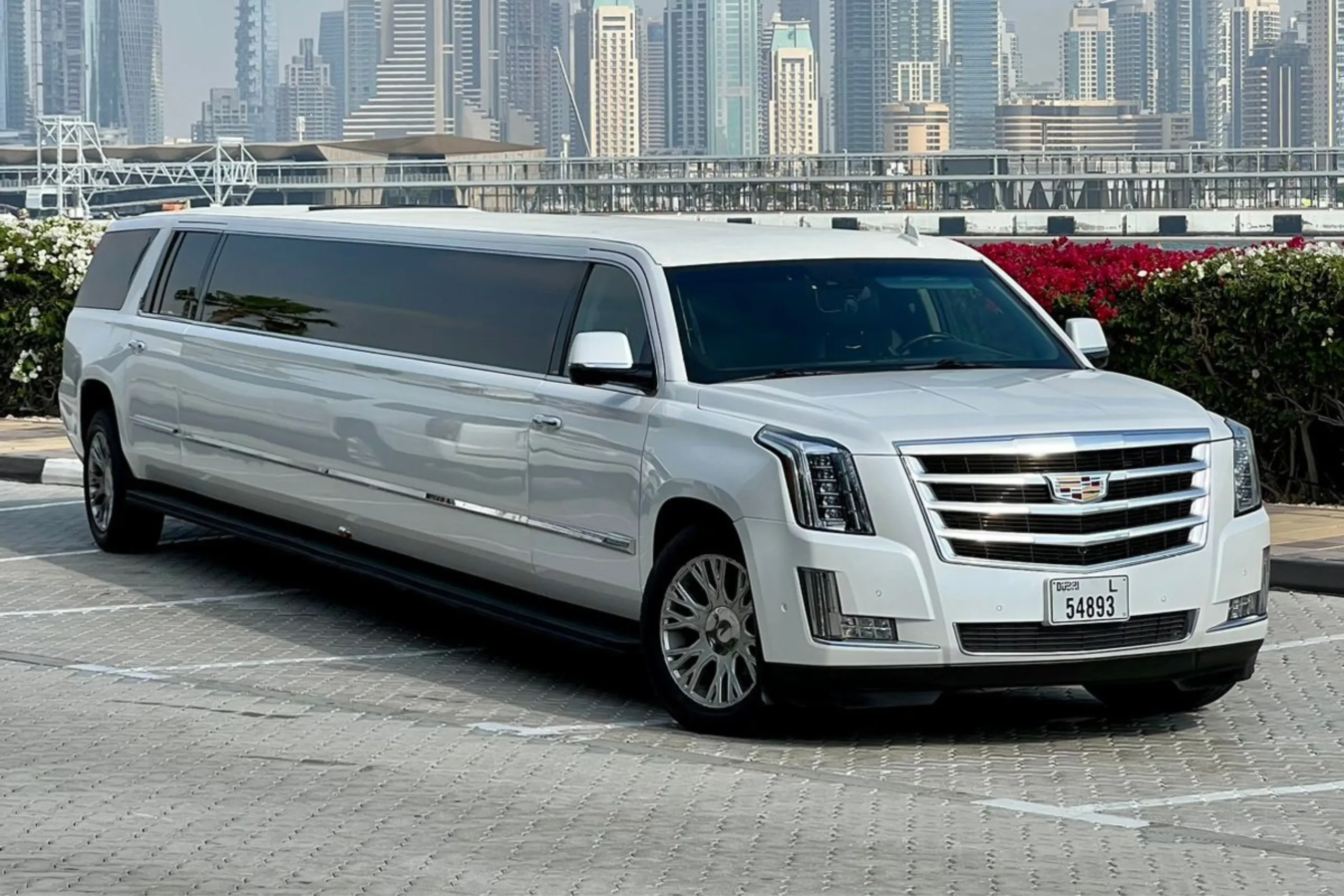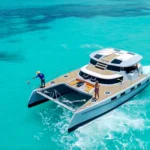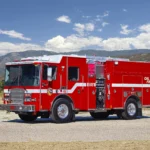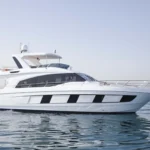
Limousines are the epitome of luxury and sophistication, symbolizing wealth and exclusivity. These elongated vehicles, often equipped with high-end amenities, are used for special events, corporate transportation, and memorable occasions. From their historical origins to their modern-day features, limousines continue to captivate and provide an unparalleled travel experience. Here are 25 fascinating facts about limousines that showcase their unique charm and enduring appeal.
Origin: The term “limousine” originated in the early 1900s and is derived from the Limousin region in France. The name was inspired by the traditional cloaks worn by the shepherds in this area, which resembled the covered compartment of the first chauffeured vehicles. These early limousines featured a covered compartment for the driver, separate from the passenger area, providing privacy and a luxurious experience for the occupants. This concept of separating the driver from the passengers laid the groundwork for the modern limousine design.
First Limousine: The first stretch limousine was built in 1928 by the Armbruster Company of Fort Smith, Arkansas. This innovation marked the beginning of the limousine as we know it today, transforming a regular car into an elongated vehicle that could accommodate more passengers. The initial purpose of stretch limousines was to transport big band leaders, like Glenn Miller and Benny Goodman, and their orchestras, leading to their nickname “big band buses.” This development set the stage for limousines to become symbols of luxury and status.
Length: The longest limousine ever built is known as the “American Dream,” which measures an astounding 100 feet (30.5 meters) long. This record-breaking vehicle was created by Jay Ohrberg of Burbank, California. The limousine features 26 wheels and includes a variety of luxury amenities such as a swimming pool, a Jacuzzi, a helipad, and even a king-sized waterbed. The “American Dream” represents the pinnacle of limousine extravagance, showcasing the extent to which these vehicles can be customized and stretched.
Weight: A standard limousine weighs between 4,000 to 6,000 pounds (1,800 to 2,700 kg). This significant weight is due to the reinforced chassis and the additional materials used to extend the vehicle’s length and enhance its structural integrity. The weight can also increase depending on the amenities and modifications added to the limousine, such as sound systems, mini-bars, and luxury seating. The heavy weight of limousines necessitates powerful engines to ensure smooth and efficient operation.
Capacity: Stretch limousines can typically seat 8 to 20 passengers, depending on the model and the extent of the modifications. This seating capacity makes them ideal for group transportation to special events such as weddings, proms, corporate gatherings, and parties. The interior layout can be customized to include features like bench seating, wrap-around seating, and even dance floors, providing a comfortable and luxurious experience for all passengers. The large capacity of limousines makes them versatile for various occasions.
Speed: The fastest limousine is a modified 2004 Lincoln Town Car that reached a speed of 300 miles per hour (480 km/h) in 2004. This extraordinary feat was achieved by a team of engineers who significantly altered the vehicle’s engine and aerodynamics. The modifications included a powerful jet engine and advanced materials to reduce weight and enhance speed. This record-setting limousine demonstrates the potential for high performance in a vehicle class typically associated with luxury and comfort rather than speed.
Cost: The most expensive limousine ever sold was a custom-built 2007 Maybach 62, which sold for approximately $500,000. This high price tag reflects the extensive customization and luxurious features that were incorporated into the vehicle. The Maybach 62 limousine included amenities such as a fully equipped office, a high-end sound system, premium leather upholstery, and advanced climate control systems. The high cost of such limousines highlights their status as ultimate luxury vehicles, often tailored to the specific preferences of wealthy clients.
Features: Many limousines come equipped with a variety of high-end amenities designed to enhance passenger comfort and enjoyment. Common features include a mini-bar stocked with beverages, a high-quality sound system for entertainment, and mood lighting to create an ambiance. Other luxury features might include flat-screen televisions, fiber optic lighting, tinted windows for privacy, and advanced air conditioning systems. These features transform a simple ride into a luxurious and enjoyable experience, making limousines a preferred choice for special occasions.
Popular Models: The Lincoln Town Car has been one of the most popular limousine models in the United States for decades. Known for its reliability, comfort, and spacious interior, the Lincoln Town Car has been a favorite choice for limousine conversions. Its strong frame and powerful V8 engine make it well-suited for the structural modifications required to create a stretch limousine. The Town Car’s reputation for durability and luxury has cemented its status as a classic choice in the limousine industry.
Production: Limousines are often built by modifying existing luxury vehicles, with Cadillac, Mercedes-Benz, and BMW being popular choices. The conversion process involves extending the vehicle’s chassis, reinforcing its structure, and adding luxury features and amenities. Companies specializing in limousine production meticulously design and customize these vehicles to meet specific client needs and preferences. This process ensures that each limousine is unique, offering a bespoke luxury experience that combines the original vehicle’s performance with enhanced comfort and style.
Usage: Limousines are commonly used for special events such as weddings, proms, and corporate events. They provide a luxurious and stylish mode of transportation, making these occasions more memorable. For weddings, limousines offer spacious interiors for the bride and groom, often featuring decorations like ribbons and flowers. Prom nights see high school students opting for limousines to arrive in style, often sharing the ride with friends. Corporate events utilize limousines to transport executives and clients, reflecting professionalism and status. The diverse use of limousines highlights their versatility in adding elegance to any event.
Color: While black and white are the most common colors for limousines, these vehicles can be found in a variety of colors, including pink and even purple. Black limousines are often associated with corporate and formal events, symbolizing sophistication and elegance. White limousines are popular for weddings and proms, representing purity and celebration. However, unique colors like pink and purple cater to clients seeking a more vibrant and standout appearance. The availability of different colors allows clients to choose a limousine that matches the theme and mood of their event.
Customization: Limousines can be heavily customized, with options for hot tubs, dance floors, and even karaoke machines. These customizations cater to the specific preferences and needs of clients, transforming the vehicle into a mobile entertainment hub. Hot tubs offer a unique luxury experience, while dance floors provide a party atmosphere on wheels. Karaoke machines add an element of fun, making the ride enjoyable for passengers. The extensive customization options highlight the adaptability of limousines in providing personalized and memorable experiences.
Historical Use: Limousines were originally used by wealthy individuals and celebrities, but they have become more accessible for special events. In the early 20th century, limousines were a symbol of wealth and exclusivity, often seen transporting dignitaries, movie stars, and business magnates. Over time, the limousine industry expanded, offering rental services for weddings, proms, and corporate events, making luxury transportation available to a broader audience. This democratization of limousine services has allowed more people to experience the elegance and prestige once reserved for the elite.
Limo Services: The limousine rental industry is estimated to be worth over $6 billion in the United States. This substantial market value reflects the high demand for luxury transportation for various occasions. The industry includes a wide range of services, from airport transfers to event-specific packages. Companies compete by offering diverse fleets, exceptional customer service, and unique amenities to attract clients. The significant economic impact of the limousine rental industry underscores its importance in the luxury transportation sector and its role in enhancing special events and experiences.
Regulations: Many cities have specific regulations regarding limousine services, including licensing and insurance requirements. These regulations ensure the safety and reliability of limousine operations. Licensing typically involves background checks and special driver training, while insurance requirements protect both the passengers and the company. Some cities also impose limits on vehicle length and emissions standards. Adherence to these regulations ensures that limousine services operate within legal frameworks, providing safe and high-quality transportation for clients.
Famous Owners: Celebrities like Jay-Z and Kim Kardashian have been known to own custom limousines. These high-profile individuals often opt for heavily customized vehicles that reflect their personal style and status. Jay-Z, for example, has owned a Maybach Exelero, a luxury vehicle with an opulent interior. Kim Kardashian has been seen in a custom Rolls-Royce Phantom limousine, featuring advanced entertainment systems and plush seating. The ownership of limousines by celebrities highlights their status symbols and their role in representing wealth and luxury.
Luxury Features: High-end limousines can include features such as leather seating, advanced climate control, and entertainment systems. Leather seating offers a premium feel and comfort, while advanced climate control ensures a pleasant environment regardless of the weather. State-of-the-art entertainment systems, including high-definition screens and surround sound, provide passengers with a top-tier multimedia experience. Additional features like privacy partitions, ambient lighting, and refreshments further enhance the luxury and convenience, making high-end limousines a preferred choice for discerning clients.
Historical Records: The longest limousine ride recorded was 12,000 miles (19,300 km) across the United States in 2006. This journey was undertaken by a team to set a record and demonstrate the reliability and endurance of limousines over long distances. The trip covered various terrains and weather conditions, showcasing the vehicle’s performance and comfort. The successful completion of this extensive journey highlighted the capabilities of limousines beyond short city trips, proving their suitability for extended travel with luxury and style.
Environmental Impact: Limousines are often criticized for their fuel consumption, with some models averaging only 10-15 miles per gallon. The large size and weight of these vehicles contribute to their lower fuel efficiency compared to standard cars. This high fuel consumption has environmental implications, including increased greenhouse gas emissions and greater resource use. In response, some limousine companies are exploring more eco-friendly options, such as hybrid or electric limousines, to reduce their environmental footprint while maintaining luxury and performance.
Limo Types: There are various types of limousines, including stretch limousines, SUV limousines, and vintage limousines. Stretch limousines are the most traditional type, known for their elongated bodies and luxurious interiors. SUV limousines offer more space and rugged aesthetics, often featuring advanced entertainment systems and additional amenities like dance floors. Vintage limousines, such as classic Rolls-Royce or Cadillac models, provide a nostalgic and elegant experience, often chosen for weddings and themed events. The diversity in limousine types allows clients to select a vehicle that best suits their occasion and style preference.
Limousine Drivers: Limousine drivers are often required to have special licenses and undergo background checks. These requirements ensure that drivers possess the necessary skills and qualifications to operate these large, luxury vehicles safely. The special licenses, often called chauffeur licenses, involve additional training on defensive driving, customer service, and vehicle maintenance. Background checks help ensure passenger safety by screening for criminal records. The stringent requirements for limousine drivers uphold high standards of professionalism and reliability in the industry.
Prom Popularity: Limousines have become a popular choice for prom night transportation, with many companies offering packages for high school students. These packages often include multiple stops for photos, refreshments, and decorations to enhance the prom experience. Limousines provide a glamorous and safe way for groups of students to travel together, adding a sense of luxury and excitement to the evening. The popularity of limousines for proms underscores their role in creating memorable and celebratory moments for young people.
Iconic Movies: Limousines are frequently featured in films and television shows, often symbolizing wealth and luxury. Iconic scenes include the lavish lifestyles depicted in movies like “The Great Gatsby,” where limousines are used to convey opulence. In TV shows like “Entourage,” limousines represent the high status and success of the characters. Their frequent appearance in media reinforces the cultural association of limousines with affluence, power, and prestige, making them an enduring symbol of luxury in popular culture.
Global Reach: Limousines are used worldwide, with notable markets in the United States, Europe, and Asia. In the United States, limousines are popular for corporate events, weddings, and proms. European markets, particularly in cities like London and Paris, use limousines for high-end tourism and VIP transport. In Asia, growing affluence has increased demand for luxury vehicles, with cities like Tokyo and Hong Kong seeing a rise in limousine services. The global reach of limousines highlights their universal appeal as symbols of luxury and sophistication across different cultures and regions.
Frequently Asked Questions About Limousines
General Limousine Questions
Q: What is a limousine? A: A limousine is a large, luxury vehicle typically used for transportation. It’s characterized by its elongated body, spacious interior, and often includes features like leather seating, entertainment systems, and bars.
Q: What are the different types of limousines? A: There are several types of limousines, including:
- Stretch limousines: The classic elongated limousine.
- SUV limousines: Larger vehicles with SUV-like features.
- Party buses: Limousines with party-oriented features like dance floors and sound systems.
- Sedan limousines: Upscale sedans with limousine-like amenities.
Q: What occasions are limousines typically used for? A: Limousines are commonly used for:
- Weddings
- Proms
- Airport transfers
- Corporate events
- Night on the town
- Birthdays
- Anniversaries
Q: How much does it cost to rent a limousine? A: The cost of renting a limousine varies depending on factors such as:
- Type of limousine
- Number of passengers
- Duration of rental
- Location
- Time of year
- Additional services (e.g., decorations, alcohol)
Q: How far in advance should I book a limousine? A: It’s recommended to book a limousine at least a few weeks, if not months, in advance, especially for popular dates like weekends and holidays.
Q: What is included in the limousine rental price? A: The specific inclusions vary by company, but typically the rental price covers the vehicle, chauffeur, fuel, and basic insurance. Additional fees may apply for extras like gratuity, tolls, and alcohol.
Booking and Rental Process
Q: How do I book a limousine? A: You can usually book a limousine by:
- Contacting a limousine service directly by phone or email
- Using an online booking platform
Q: What information is needed to book a limousine? A: When booking, you’ll typically need to provide:
- Date and time of pickup and drop-off
- Number of passengers
- Desired limousine type
- Pickup and drop-off locations
- Any special requests (e.g., decorations, alcohol)
- Contact information
Q: What is the cancellation policy? A: Cancellation policies vary by company, but there’s often a fee for cancellations made close to the rental date.
Q: Can I bring food and drinks in the limousine? A: This depends on the limousine company’s policy. Some allow it, while others have restrictions or require additional fees.
Limousine Experience
Q: What should I expect from a limousine service? A: You can expect a high level of service, including a professional chauffeur, clean and luxurious vehicle, and a comfortable and enjoyable experience.
Q: Can I request a specific chauffeur? A: It’s usually not possible to request a specific chauffeur, but you can often provide feedback on your experience.
Q: Is tipping the chauffeur customary? A: Tipping the chauffeur is customary and appreciated. The standard tip is usually 15-20% of the total fare.
Q: What happens if my flight is delayed? A: Most limousine services monitor flight information and adjust pickup times accordingly. However, it’s always a good idea to inform the company of any flight delays.
Q: Can I use the limousine for sightseeing? A: Yes, many limousine companies offer sightseeing tours. You can inquire about this when booking.
Safety and Legality
Q: Are limousines safe? A: Limousines are subject to the same safety regulations as other vehicles. Reputable limousine companies prioritize safety and maintain their vehicles in good condition.
Q: What is the legal drinking age for passengers in a limousine? A: The legal drinking age varies by location. It’s important to be aware of local laws and regulations.
Q: What is the passenger limit for a limousine? A: The passenger limit depends on the size of the limousine. The limousine company will provide information on the capacity of the vehicle you’re renting.
Q: Are there any age restrictions for renting a limousine? A: Age restrictions vary by company and location. Some companies require the renter to be of legal drinking age.
By understanding these FAQs, you can confidently book and enjoy your limousine experience.









